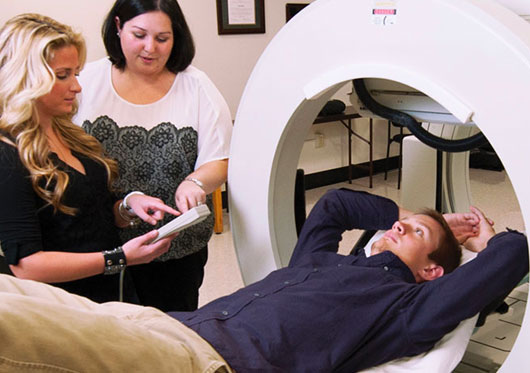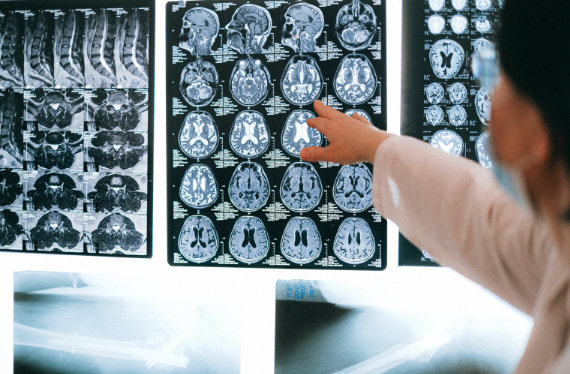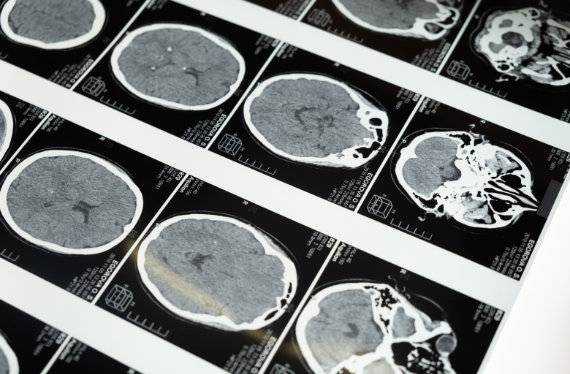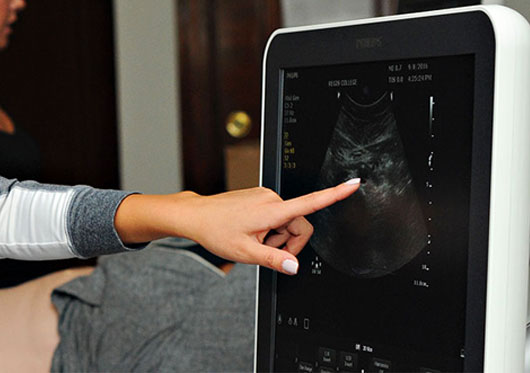Pursuing a career in the medical field can be a daunting endeavor. Most career paths require multiple years of education, residency hours, and clinical experience. Medical imaging, however, is a thriving healthcare career that allows people with a passion for helping others to enter the field quickly.
If you're drawn to medical imaging, you'll discover numerous rewarding opportunities. For example, a great career path to consider is becoming a radiologic technologist. Here’s everything you need to know about this thriving career path, how to become one, and whether it’s the right fit for you.
What is a Radiologic Technologist?
Radiologic technologists take up a large portion of the professional medical field. In fact, according to the American Association of Radiologic Technologists, “Radiologic technologists make up the third-largest group of health care professionals—surpassed in number only by physicians and nurses.”
Radiologic technologists acquire images of patients’ bodies using medical imaging equipment. These images help doctors diagnose and treat patient diseases and injuries. Radiologic technologist’s use various types of equipment, depending on their specialty, such as X-ray, MRI, CT, fluoroscopy, or sonography equipment.
While these responsibilities are similar to other medical imaging positions, there are additional responsibilities that prospective radiologic technologists should be aware of. In some cases, they inject patients with radiopharmaceutical agents to ensure detailed images. Unlike some other medical imaging positions, radiologic technologists may assist in the treatment side of patient visits as well. For example, they can help physicians perform procedures—such as angioplasty or stent insertion—or administer therapeutic doses of radiation to treat diseases such as cancer.
What’s the difference between a radiologist and a radiologic technologist?
A radiologist is a medical doctor who interprets medical images to diagnose and treat diseases, requiring extensive education, including medical school and specialized training. A radiologic technologist is a trained healthcare professional who is typically supervised by a radiologist and performs diagnostic imaging examinations. Radiologic technologists are required to complete an accredited program, typically an associate's or bachelor's degree, and must pass a certification exam.
How to Become a Radiologic Technologist
If this sounds like an exciting career option, here’s a look at the steps you’ll need to take in becoming a radiologic technologist.
1. Complete Your Primary Education
Even though becoming a radiologic technologist doesn’t require medical school, education is still a vital part of entering the field. For most job postings, radiologic technologist training requires at least an associate’s degree from an accredited institution or program, ensuring candidates have the foundational skills necessary for the field. This two-year program option offers medical imaging professionals the foundational skills needed to enter the field quickly. Students must complete specialized coursework, as well as over 1,000 clinical hours working with patients under faculty supervision.
2. Fine-tune Your Skills
An associate’s degree will certainly help aspiring radiologic technologists obtain an entry-level position, but it will only get you so far. Those hoping for professional growth and career advancement should consider earning a bachelor’s degree.
To current technologists, this additional education might seem like a waste of time, but according to analysis of labor insights data, over 25 percent of radiologic technologists have a bachelor’s degree or higher as of 2024. This is largely due to the fact that bachelor’s degree programs give medical imaging professionals specialized skills that many employers look for in higher paying roles.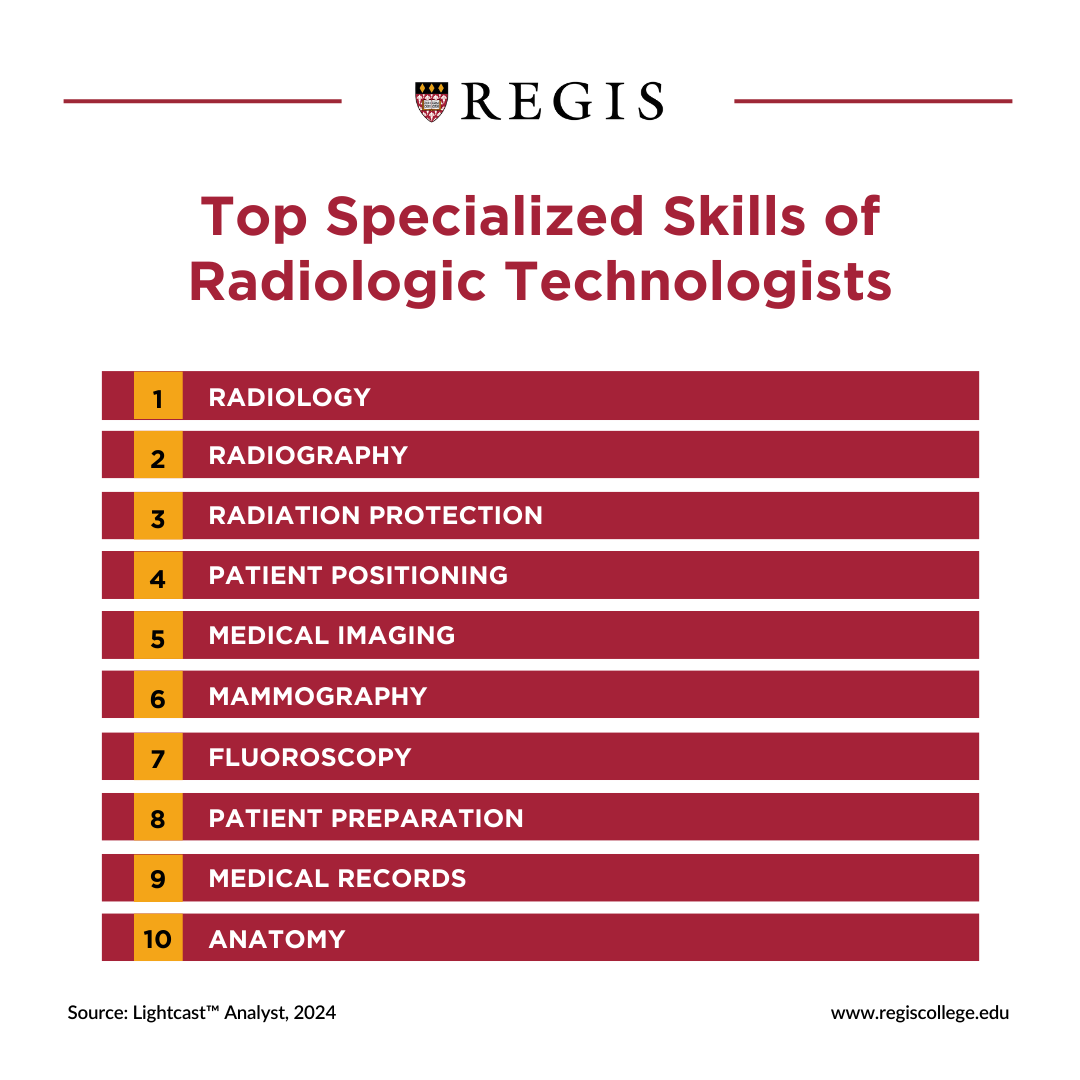
According to labor insights data, some of these skills include:
- Radiology: Imaging with X-rays and other high-energy radiation such as CT scans, MRI, and ultrasound
- Radiography: Taking radiographs to assist in medical examinations
- Radiation Protection: Reducing radiation exposure using simple protective measures like proper distance and shielding
- Patient Positioning: Specific placing of a patient's body during radiographic procedures to ensure optimal imaging results
- Medical Imaging: Using various imaging techniques to visualize the internal structures of the body for diagnosis and treatment
3. Get Certified
Certification for radiologic technologists is essential, often being the final step to entering the field as many employers prioritize certified candidates. This is often the last step for many aspiring radiologic technologists since work experience isn’t typically required for these roles. According to our analysis of job postings data, 52 percent of radiologic technologist job postings don’t list experience requirements listed in the posting.
Instead, many employers look for applicants with relevant education and the necessary certifications and licensures. Some of the most common qualifications include:
- American Registry of Radiologic Technologists (ARRT) Certification: According to the American Registry of Radiologic Technologists, more than 330,000 technologists hold ARRT credentials. This certification recognizes individuals who are qualified to perform the duties in their medical imaging role. Prospective employers, state licensing agencies, and federal regulators all consider an ARRT certification a verification of current professional standards.
- Radiologic Technologist/Technician Certification: ARRT has several certifications that acknowledge individuals qualified to perform specific roles. For example, the Radiologic Technologist/Technician certification and registration recognizes individuals who are qualified to become a radiologic technologist. All employers require their technologists to hold ARRT certifications like this one.
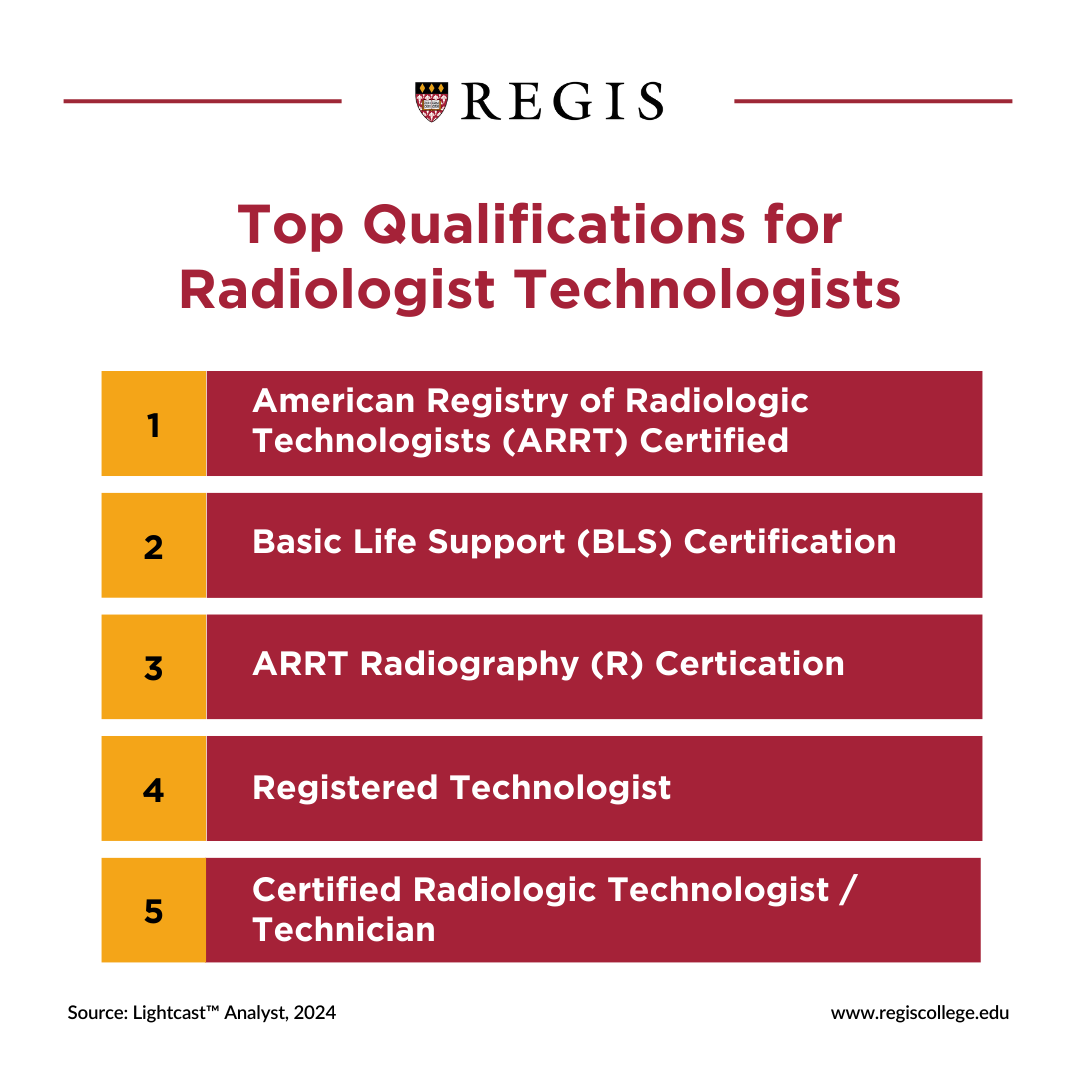
4. Consider a Specialization
After earning your certification, you can choose to specialize in one of the many radiologic technologist specializations to further advance your career. Through additional education and training, you can become certified in a medical imaging specialty area such as:
- Computed Tomography (CT): CT technologists use X-ray equipment to create detailed cross-sectional images of the body, which help diagnose a wide range of conditions.
- Magnetic Resonance Imaging (MRI): MRI technologists operate MRI scanners to produce detailed images of organs and tissues using magnetic fields and radio waves.
- Mammography: Mammography technologists specialize in using low-dose X-ray systems to examine breast tissue for early detection of breast cancer.
- Sonography (Ultrasound): Sonographers use high-frequency sound waves to produce images of internal body structures, commonly used in obstetrics, cardiology, and abdominal imaging.
- Nuclear Medicine: Nuclear medicine technologists prepare and administer radioactive substances to capture images of how the body functions, assisting in diagnosing and treating diseases.
Each specialty has its unique focus and technology, so consider your interests and career goals when making your choice.
Is a Radiologic Technologist a Fulfilling Career?
Becoming a radiologic technologist can be a relatively quick process, but that doesn’t mean it’s not a fulfilling career. Here are some benefits of becoming a radiologic technologist/technician.
High Salary Potential
According to our analysis of job postings data, the median advertised salary for radiologic technologist and technicians positions is $100.2K. Since this is more than most medical imaging careers, becoming a radiologic technologist has relatively high earning potential.
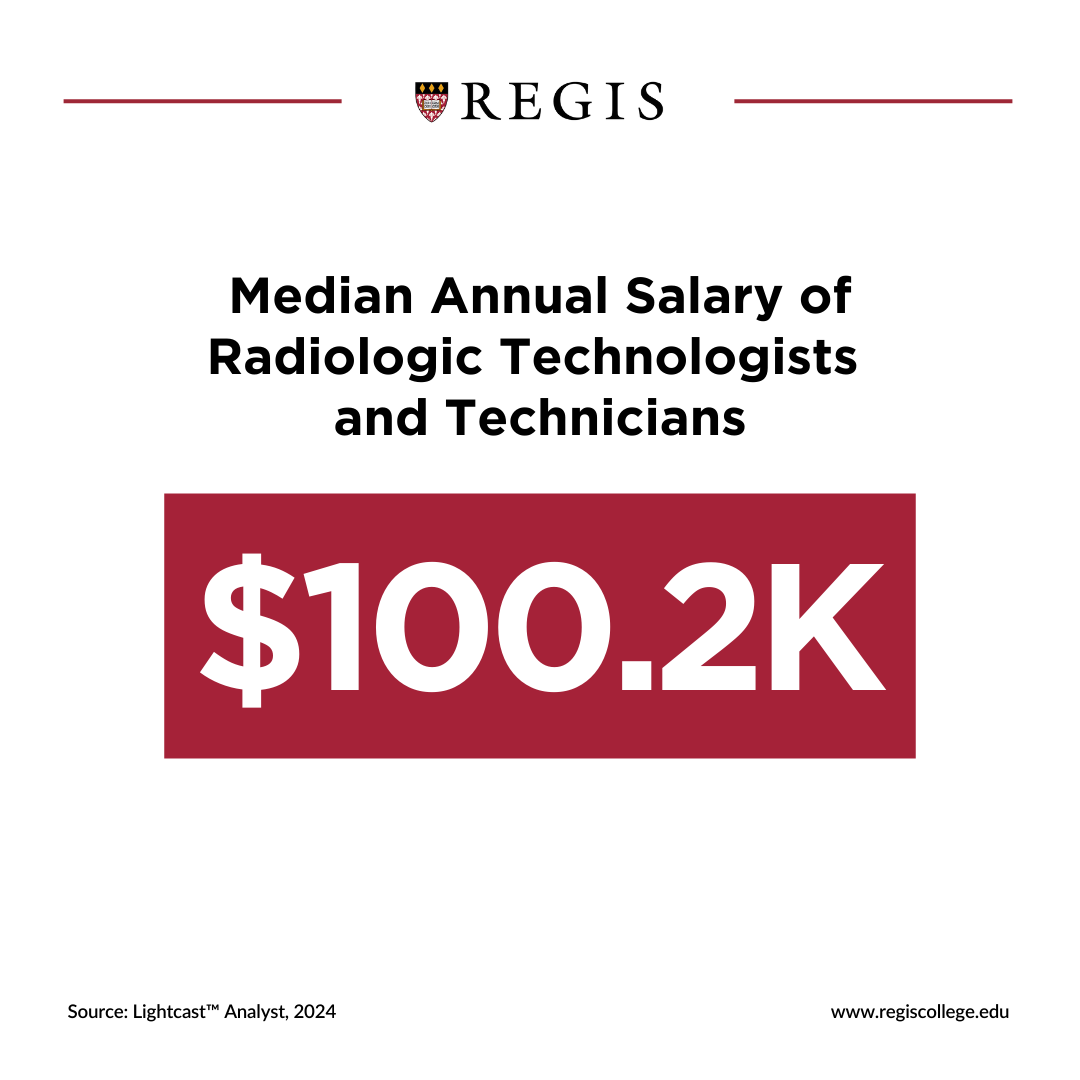
Increased Job Opportunities
No matter what career path you pursue, it’s important to choose a position that has promising job growth and increasing opportunities. According to labor insights data, there has been a gradual increase in the number of unique job postings over the past year. The career outlook for radiologic technologists is promising, with our analysis of occupational data estimating overall employment of radiologic technologists is projected to grow nearly 12 percent from 2023 to 2033.
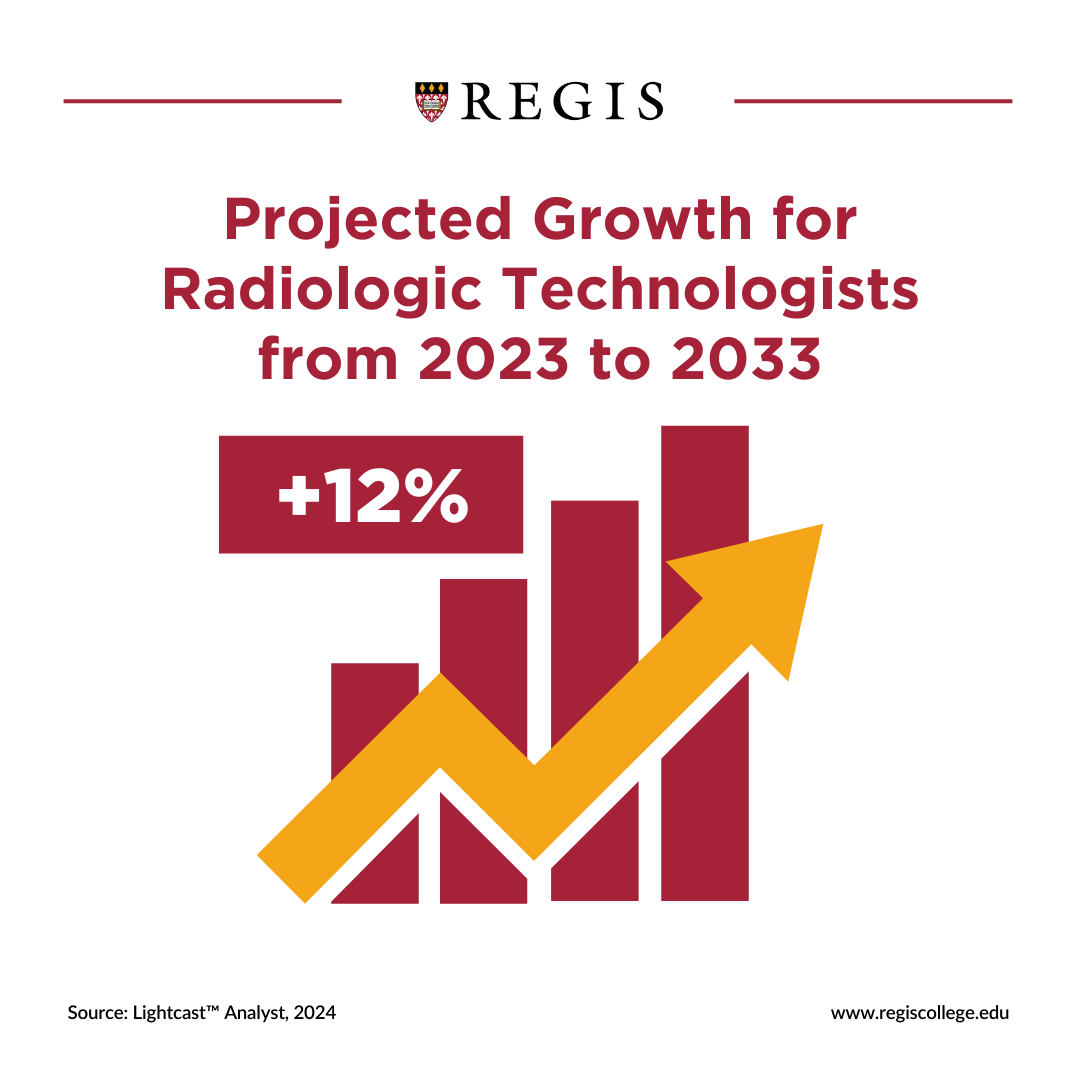
Take the Next Step Toward Your Career as a Radiologic Technologist
The first step to a rewarding career as a radiologic technologist is obtaining the right education. Regis College offers a specialized bachelor's completion program in medical imaging, tailored for registered and registry-eligible technologists across all modalities.
Gary L’Abbe, the director of Regis College’s medical imaging bachelor’s completion program, describes the medical imaging program as “flexible and accommodating,” making it an excellent option for students who want a self-paced and completely online education. It also provides a career ladder for working medical imaging professionals pursuing career enhancement, clinical management positions, and education and leadership roles.


